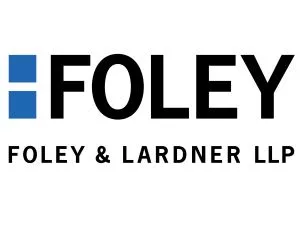- within Employment and HR topic(s)
- with Senior Company Executives, HR and Inhouse Counsel
- with readers working within the Accounting & Consultancy, Banking & Credit and Property industries
If you are a business owner, you may be overlooking one of the most powerful and time-tested succession and ownership transition toolsavailable: the Employee Stock Ownership Plan (ESOP).
ESOPs have long been attractive for their unique tax advantages and ability to reward employees, while preserving a company's legacy. For example, in certain structures, such as a 100% ESOP-owned S corporation, companies can operate largely free of federal income tax, creating a powerful cash-flow advantage. Certain owners can also defer, or even eliminate, capital gains tax on the sale of their shares.
Despite these advantages, ESOP formation has slowed in recent years, largely due to legal uncertainty and post-closing litigation risk, particularly around valuation practices. That may be about to change, as bipartisan efforts in Washington seek to lower barriers and provide greater certainty, paving the way for a more ESOP-friendly environment:
- Valuation Clarity and Reduced Litigation Risk: Key House and Senate committees have recently advanced bipartisan legislation that would create a statutory safe harbor for ESOP fiduciaries when determining whether a sale of private company stock to an ESOP is for "adequate consideration."
- Greater Policy Influence for ESOPs: A separate bipartisan measure would add ESOP representatives to the Department of Labor's ERISA Advisory Council.
- Keeping Businesses in Local Hands: Newly introduced legislation seeks to encourage ESOP formation as a tool to root companies in their communities and preserve homegrown enterprises.
While these proposals are not yet law, their advancement through key House and Senate committees underscores the growing bipartisan recognition that ESOPs strengthen domestic competitiveness, safeguard jobs, build employee wealth, and promote long-term economic resilience.
The private equity sector is taking note as well. Firms are exploring partially or fully-owned ESOP structures to align employee incentives, improve retention, and boost performance. Initiatives like Ownership Works—co-founded by KKR—aim to expand equity participation for rank-and-file employees across portfolio companies, underscoring the mainstream embrace of broad-based employee ownership.
The data for ESOP-owned companies also supports this momentum. According to third party research, young adults at ESOP companies have 92% higher median household net worth and 33% higher wage income than peers at non-ESOP companies. Employees also stay longer— ESOP companies have lower turnover, were three to four times more likely to retain staff during COVID-19, and show lower bankruptcy rates in economic downturns.
Key Takeaway for Business Owners: ESOPs are regaining momentum as one of the most compelling, tax-efficient, and legacy-preserving succession and ownership transition tools available. If you are weighing the next steps for your business, including a potential sale to a strategic buyer or private equity firm, you should also consider an ESOP. This article provides an overview of ESOPs and explains when an ESOP might be the right fit for you and your company.
ESOP Overview
An ESOP is a tax-qualified retirement plan, similar to a 401(k), that invests primarily in company stock. When an ESOP is formed, the company's existing shareholders typically sell their shares to the ESOP's trust established for the benefit of employees. To facilitate the sale, the ESOP trust is typically funded through a combination of company borrowing (bank or other lender financing) and seller financing (notes and detachable warrants). Together, these mechanisms provide the necessary financing to allow the ESOP trust to pay fair market value for the shares.
Employees, through their participation in the ESOP, become beneficial owners (not direct shareholders) of the company on a "tax-advantaged basis," meaning they do not recognize taxable income when shares are allocated to their ESOP accounts. Instead, tax is deferred until employees receive distributions from the plan, typically at retirement.
Congress first recognized ESOPs in the Employee Retirement Income Security Act of 1974, with further tax incentives added in later legislation. Today, there are about 6,500 ESOPs covering more than 15 million participants nationwide, distributing roughly $150 billion annually in benefits. Collectively, employees enrolled in ESOPs across the country hold more than $1.3 trillion in retirement wealth.
Key Tenets of an ESOP Formation Transaction
- Fair Market Value – Trustees, acting as the fiduciary on behalf of an ESOP, pay no more and no less than fair market value for shares, ensuring a market-based transaction in compliance with the tax rules that apply to qualified retirement plans.
- Significant Tax Advantages – Corporate
and shareholder tax benefits can make after-tax proceeds
competitive with, or even superior to, private equity or strategic
sales:
- S Corporation Exemption – ESOP-owned S corporations avoid federal and, in many cases, state income tax on their ESOP-owned share of earnings.
- Section 1042 Rollover – Eligible C corporation shareholders can defer and potentially eliminate capital gains taxes by reinvesting ESOP transaction proceeds in "qualified replacement property."
- Corporate Tax Deductions – When a company establishes an ESOP, the ESOP trust typically "borrows" money from the company in what's called an internal loan. The company gets that cash either from its own cash reserves or from outside bank financing, and then contributes it to the ESOP trust so the trust can buy the shares from the selling shareholders. When an ESOP borrows from the company in this way, the ESOP is known as a "leveraged" ESOP while the loan is outstanding. Each year, the company makes tax-deductible contributions to the ESOP, and the ESOP uses those contributions to pay down the internal loan. In practice, this creates a "double benefit": the company gets a tax deduction for making the contributions to the ESOP, and those contributions are then used to retire the acquisition debt—improving cash flow compared to a taxable structure.
- Wealth Building for Employees – ESOPs put appreciating assets directly in the hands of workers. Unlike other tax-qualified defined contribution plans, like 401(k) plans, most ESOPs require no out-of-pocket contributions from employees. This means more workers gain ownership and valuable retirement savings benefits without having to stretch paychecks. Each year, eligible employees are allocated additional shares under their ESOP accounts as the ESOP loan is repaid. While the company does not reinvest dividends or compound returns in the traditional sense, the value of each share grows as the company grows. Over time, the combination of accumulating more shares and an increasing share price generates meaningful retirement wealth for employees.
- Higher Engagement and Retention – Ownership fosters a deeper connection to the company's success. As a tax-qualified retirement plan, ESOPs are required to follow certain nondiscrimination and vesting rules under the tax code, which facilitate providing broad-based employee ownership in annual ESOP allocations and encouraging employee retention to fully vest in accrued benefits under the plan. ESOP structures consistently produce greater commitment, lower turnover and higher engagement. According to the ESOP Association, ESOP adoption is linked with 46% longer average tenure for employees and 80% of leaders report better recruitment and retention.
- A Culture of Continuous Improvement – Employee ownership fuels a shared drive for innovation and efficiency. ESOP companies routinely report that employees bring forward new ideas, seek process improvements and "row in the same direction" with a unified sense of purpose. According to the ESOP Association, ESOP companies are 1.4 times more likely to provide employee training than conventionally owned businesses, helping ensure the workforce remains skilled, engaged and future-ready.
- Financial and Operational Resilience – ESOP companies often take a long-term view, prioritizing sustainable growth over short-term gains. This mindset has helped many navigate downturns and emerge stronger. According to the ESOP Association, studies show ESOP-owned companies are 7.3 times less likely to lay off employees than conventional private companies, helping sustain local economies when times get tough.
- Legacy Preservation – Selling to an ESOP keeps ownership within the organization, minimizing cultural disruption and preserving brand and strategic direction.
- Structural Flexibility – ESOP transactions can be structured as partial or full sales (including a planned series of sales to increase ESOP ownership over time), tailored to shareholder needs and financed through combinations of company cash, senior bank debt, seller notes (often with detachable warrants), and mezzanine debt if needed. In practice, the company usually takes on debt—either (i) to redeem shares directly from shareholders and then contribute those shares over time to the ESOP trust for allocation to participants, or (ii) to contribute cash to the ESOP trust, which in turn uses that cash (through an internal loan) to purchase shares directly from shareholders. In either structure, shares are gradually allocated to participants over time. As the company pays down its debt, any warrants attached to selling shareholder notes typically increase in value as the business grows. This gives selling shareholders an additional potential upside for financing the ESOP transaction—often through lower-interest seller notes.
When an ESOP May Be the Right Fit
An ESOP may be especially compelling if you:
- Want liquidity without selling to a competitor or private equity firm.
- Seek flexibility in succession timing as ESOPs allow owners to sell all or part of their shares on their own schedule, providing control over exit planning.
- Seek to preserve your company's culture, autonomy, and brand.
- Operate in industries with limited buyer interest, increased regulatory scrutiny, or headline risk.
- Have strong, stable cash flows and a capable leadership team.
- Prefer to transition ownership over time while remaining involved post-transaction.
- Wish to capture estate planning and tax benefits through creative structuring.
The content of this article is intended to provide a general guide to the subject matter. Specialist advice should be sought about your specific circumstances.




